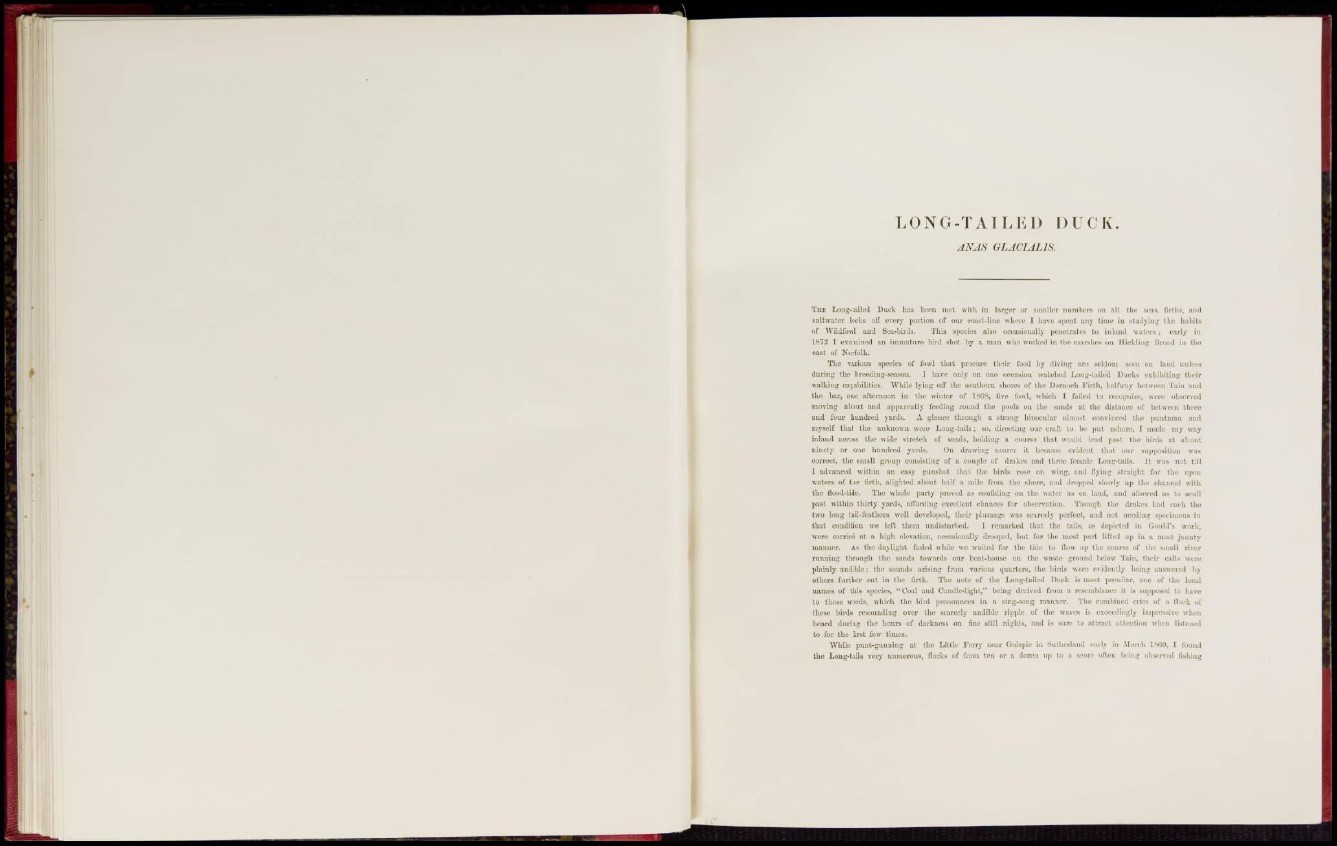
L O N G - T A I L ED DUCK.
ANAS GLACIALIS.
THE Loog4ai)ed Duck has been met with in larger or smaller numbers on nil the sens, firths, ami
saltwater lochs off every portion of our coast-liuc where I havo spout any time in studying tho habits
of Wildfowl and Sea-birds. This species also occasionally penetrates to inland waters ; early in
1872 I examined an immature bird shot by a man who worked in tho marshes on Hiokling Brad in the
east of Norfolk.
The various species of fowl that procure their food by diving are seldom seen on laud unless
during the breeding-season. I have only on one occasion watched Long-tailed Ducks exhibiting their
walking capabilities. While lying off the southern shores of the Dornoch Firth, halfway between Tain and
the bar, one afternoon in the winter of 1808, five fowl, which I failed to recognize, were observed
moving about and apparently feeding round the pools on the sands at the distance of between three
and four hundred yards. A glance through a strong binocular almost convinced the puntmau and
myself that the unknown were Long-tails; so, directing our craft to he put ashore, I made my way
inland across the wide stretch of sands, holding a course that would lead past the birds at about
ninety or one hundred yards. On drawing nearer it became evident that our supposition was
correct, the small group consisting of a eouple of drakes and three female Long-tails. It was not till
I advanced within an easy gunshot that the birds rose on wing, and flying straight for the open
waters of tho firth, alighted about half a mile from the shore, and dropped slowly up the channel with
tho flood-tide. Tho whole party proved as confiding on the water as on land, and allowed us to scull
past within thirty yards, affording excellent chances for observation. Though the drakes bad each tho
two long tail-feathers well developed, their plumage was scarcely perfect, and not needing specimens in
that condition we left them undisturbed. I remarked that the tails, as depicted in Gould's work,
were carried nt a high elevation, occasionally drooped, but for the most part lifted up in a most jaunty
manner. As the daylight faded while we waited for tho tide to fluw up the course- of the small river
running through the sands towards our boat-house on the waste ground below Tain, their calls were
plainly audible; tho sounds arising from various quarters, tho birds were evidently being answered by
others further out in the firth. The note of the Long-tailed Duck is most peculiar, one of the luca!
names of this species, "Coal and Candle-light," being derived from a resemblance it is supposed to have
to those words, which tho bird pronounces in a sing-song manner. The combined cries of a flock of
these birds resounding over the scarcely audible ripple of the waves is exceedingly impressive when
heard during the hours of darkness on fine still nights, and is sure to attract attention when listened
to for the first few times.
While puut-gunuing at the Little Ferry near Golspie in Sutherland early in March 1869, I found
the Long-tails very numerous, flocks of from ten or a dozen up tu a score often being observed fishing